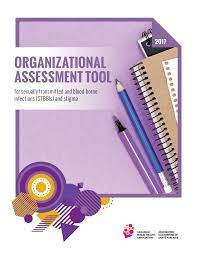Organization Assessment Tool for sexually transmitted and blood borne infections and stigma

The Organization Assessment Tool for STBBIs is ideal for health care and social service organizations that provide care and service to marginalized populations. The tool creates spaces for open discussion amongst front-line, administrative, and outreach staff and clinicians on creating safer and inclusive spaces and practices for clients.
The assessment tool has three sections. First is the organizational assessment, followed by a questionnaire and rating scale to reduce discrimination, stigma, and the final process to develop an action plan. The tool explores three conditions that are crucial for long-term goals. The three conditions are the policies, best practices, environment, and culture; the competencies of service providers; are clients supported and welcomed at the organizations. These three conditions set the foundation for achieving long-term outcomes. A component of the work is reflecting on what are the unique services the organization provides. Who are the clients that come to the organization, and clients who do not come, and why? What are the lived experiences of clients who access the services? Has the organization considered partnering with other organizations to meet the unmet needs of specific client groups?
In section 1, to start the assessment process, decide who the stakeholders to be involved and invited are. Will it be some programs and services or all of the programs and services? The assessment process is a system to uphold quality improvement. Staff and volunteers to conduct self-assessment of values, attitudes, and beliefs on STBBIs. Prioritize the areas once assessment and rating are completed. Create a working group and have staff who have decision-making authority, and senior management is in the process. Communication is crucial with the working group(s) to revisit outstanding issues and revisit on an annual basis.
In section 2, the tool explores the three conditions to build long-term outcomes to achieve a safe and supportive organizational environment. A rating system assesses the identified issues, addressed, or not yet addressed, or not relevant to the organization. There are questions to guide the discussion: STBBI core competencies for service providers; question on vicarious trauma and staff support; specialized services for clients; does the organization partner or collaborate with other organizations; the client’s relationship with the organization and access to services and a welcoming environment.
The final Section 3 chose the improvement plan, priorities, clarifies, develops, manages approval, checks-in, evaluates, and celebrates the work done.
Source: orgtool_e.pdf (cpha.ca)
